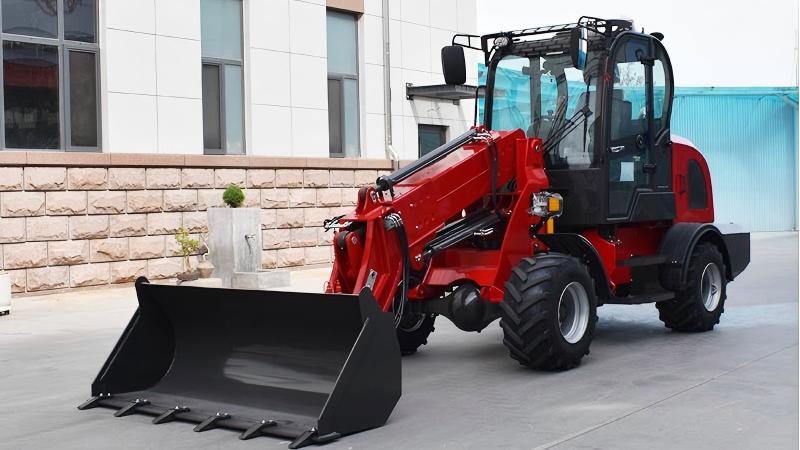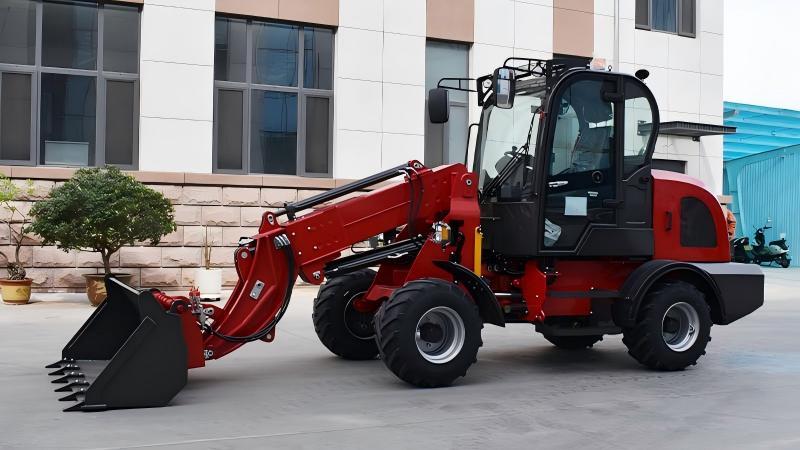The inherent question of versatility in modern construction and agricultural equipment finds a resounding answer in the telescopic handler, commonly known as a telehandler. Its core design, featuring a boom that extends both forward and upward, already sets it apart from traditional machinery. However, the true revolution lies not just in the machine itself, but in its remarkable ability to be fitted with a vast array of specialized attachments, transforming it from a simple lifting device into a multi-tasking powerhouse central to any major project. The process of fitting these attachments has been engineered for remarkable ease and speed, primarily through the industry-wide adoption of quick coupler systems. Gone are the days of cumbersome manual pinning and time-consuming hydraulic line connections that required specialized tools and significant labor hours. Modern telehandlers are equipped with sophisticated, often hydraulic or mechanical, quick-attach systems mounted on the boom's end. This allows an operator, from the safety and comfort of the cab, to release one attachment and lock onto another in a matter of minutes, or even seconds with advanced models. This seamless interchangeability is the cornerstone of the telehandler's value proposition, enabling a single machine to perform the work of several dedicated ones, thereby drastically reducing the need for a large, diverse fleet and optimizing capital expenditure while simultaneously streamlining complex operational workflows on dynamic job sites.
The sheer diversity of available specialized attachments is what truly unlocks the telehandler's potential, catering to an almost limitless spectrum of tasks across various industries. While the standard pallet forks are the ubiquitous starting point, the catalog extends far beyond. For lifting and transporting non-palletized materials, sideshifters and fork positioners provide lateral adjustment and spreading capabilities without the need to reposition the entire machine, enhancing precision and safety. In the agricultural sector, telehandlers become indispensable with manure forks, bale spears, and bucket attachments for handling everything from feed to waste. Construction sites leverage them with concrete hoppers or placing booms for precise concrete pouring, truss booms for lifting and positioning roof frames, and rugged grapple attachments for sorting and moving demolition debris or logging. For tasks requiring groundwork, hydraulic auger drives can be attached for drilling holes for fencing or foundations, while vibratory rollers or compaction wheels turn the telehandler into a compacting machine for trench work. Even more specialized tools like snow blowers, work platforms for personnel lifting, and carpet poles for the logistics industry are part of this extensive ecosystem. This immense flexibility means that whether on a bustling urban construction site, a vast farm, or a dense industrial warehouse, the telehandler can be precisely configured to meet the exact demands of the task at hand.
Underpinning this effortless attachment interchangeability is a sophisticated and integral hydraulic system and robust electrical control network. The telehandler's design incorporates one or multiple auxiliary hydraulic circuits, which are essentially pressurized fluid lines that terminate at the quick coupler. When an attachment requiring hydraulic power—such as a rotating grapple, an auger, or a compactor—is connected, these circuits automatically or manually engage to provide the necessary force to operate the attachment's functions. Similarly, a standardized electrical connector, often following a universal protocol like the ISO 15143 AEMP plug-and-play standard, transmits control signals from the operator's joystick or buttons within the cab to the attachment's solenoids and valves. This integrated "brain and muscle" system is what allows an operator to rotate a grapple 180 degrees, control the speed of an auger, or start and stop a sweeper brush without leaving the cab. The ease of fitting is, therefore, not merely mechanical but also electronic, ensuring that the attachment becomes a seamless, intuitive extension of the host machine, fully functional and controlled with precision. This technological backbone is critical for maintaining high levels of productivity and safety, as it minimizes the need for manual intervention and external power sources for the attachments.
Ultimately, the unparalleled adaptability afforded by its attachment ecosystem fundamentally redefines the telehandler's role, driving unprecedented levels of job site efficiency and operational economy. The ability to rapidly switch between a bucket, a work platform, and forks over the course of a single workday means that a single telehandler can sequentially perform site grading, elevated maintenance, and material loading without downtime waiting for different machines to arrive or be reconfigured. This multi-functionality directly translates into a significant reduction in total equipment costs, as the need to own, maintain, insure, and transport a fleet of specialized single-purpose machines is dramatically diminished. Furthermore, it optimizes labor, as a single skilled operator can manage a wide variety of tasks. When compared to a standard forklift, the telehandler's advantages become starkly evident; while a forklift is limited to essentially lifting and carrying, the telehandler, with its extending boom and diverse attachments, can reach over obstacles, place loads with greater precision at height and depth, and operate more effectively on rough or uneven terrain. This combination of reach, power, and effortless attachment compatibility solidifies the telescopic handler not just as a piece of equipment, but as a versatile, mobile power center that is pivotal to the productivity and agility of modern industrial, agricultural, and construction operations.
Post time:Nov.21.2025



